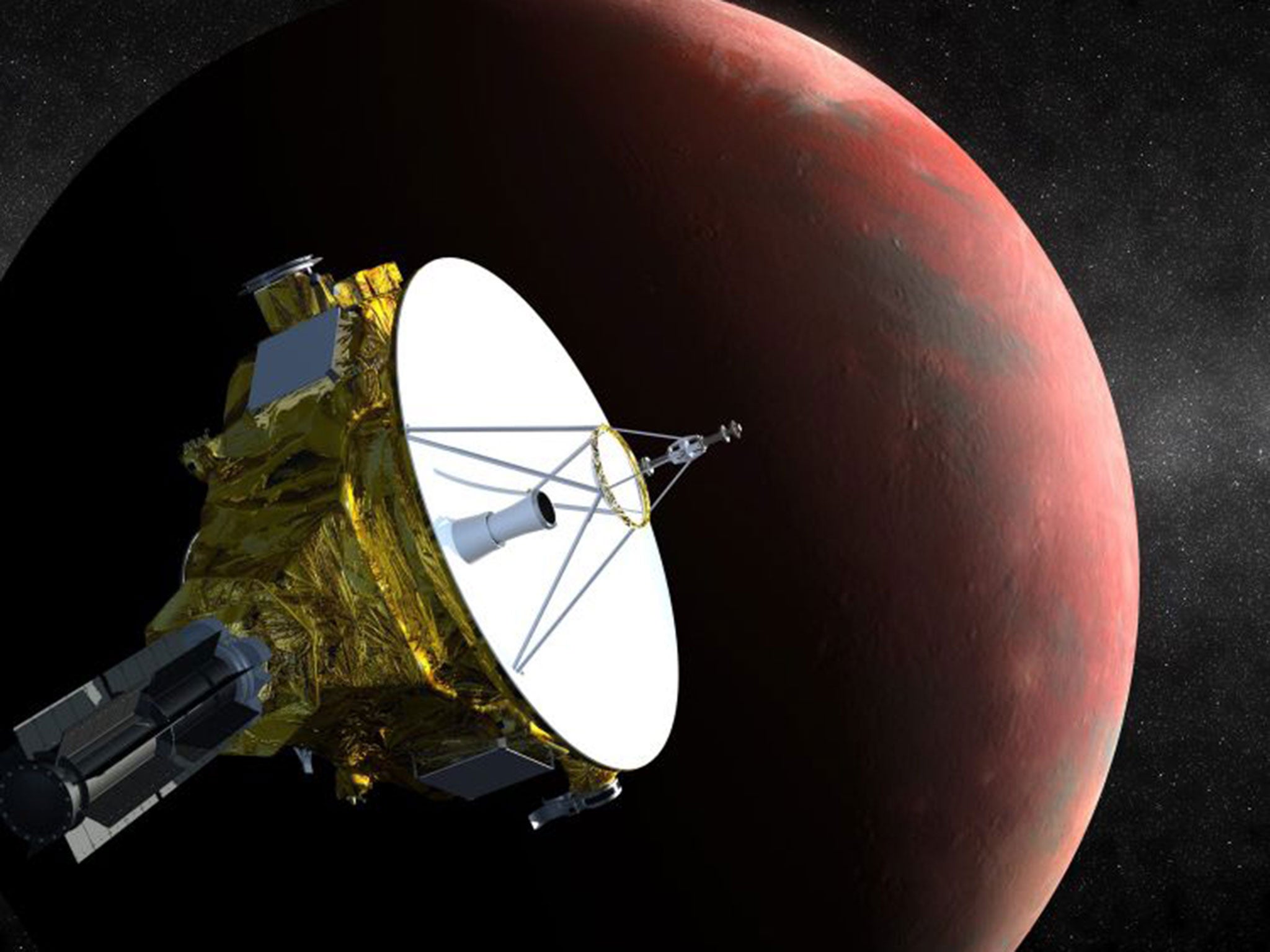Nasa's New Horizons probe wakes from hibernation to begin 'uncharted' Pluto mission
The probe was launched in 2006 and will be the farthest mission ever taken from earth

Your support helps us to tell the story
From reproductive rights to climate change to Big Tech, The Independent is on the ground when the story is developing. Whether it's investigating the financials of Elon Musk's pro-Trump PAC or producing our latest documentary, 'The A Word', which shines a light on the American women fighting for reproductive rights, we know how important it is to parse out the facts from the messaging.
At such a critical moment in US history, we need reporters on the ground. Your donation allows us to keep sending journalists to speak to both sides of the story.
The Independent is trusted by Americans across the entire political spectrum. And unlike many other quality news outlets, we choose not to lock Americans out of our reporting and analysis with paywalls. We believe quality journalism should be available to everyone, paid for by those who can afford it.
Your support makes all the difference.Nearly nine years after it was launched Nasa’s New Horizon probe has finally reached its destination 3bn miles away from earth and is ready begin its exploration of Pluto, one of the solar system’s least known about planets.
After spending a total of 1873 days switched off, the New Horizon probe was reactivated on Saturday to begin preparation for its mission of exploring Pluto early next year.
Those at Nasa had a painstaking wait of over four hours to receive the radio signal from the probe that confirmed that New Horizons had arrived at its destination, and that it was ready to begin preparations for the mission.
The New Horizons probe is now the farthest space mission has ever been undertaken, and will provide scientists with new information on Pluto and its atmosphere.
Among the tasks that the probe will carry out when it begins in January, will include photographing images of the area with the craft’s powerful infrared and ultraviolet spectrometers and high-resolution telescopic camera, as well as testing and monitoring particles and space-dust in Pluto’s atmosphere.
It will pass closest to the planet on 14 July, and give scientists the closest view they have ever had of the surface of mysterious planet.
New Horizons’ principal investigator, Alan Stern, said: “This is a watershed event that signals the end of New Horizons crossing of a vast ocean of space to the very frontier of our solar system,” said, from Southwest Research Institute.
The craft was launched in January 2006 and has spent two-thirds of its flight time in periods of hibernation that have lasted anywhere up to 202 days long. This downtime helped the probe to conserve energy and cut down on the risk of malfunctions on the craft.
Join our commenting forum
Join thought-provoking conversations, follow other Independent readers and see their replies
Comments